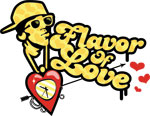
WHO:
Calling all residents, law enforcement agencies, civic groups, businesses, neighborhood organizations, local officials and military bases throughout the USA, Canada, and military bases worldwide!
WHAT:
All day today North Americans will be participating in the
23rd Annual National Night Out Against Crime (a.k.a. "National Night Out"). Gang up with over 34 million neighbors to show you're mad as hell about crime, drugs and violence and unwilling to take it any more.
The
National Night Out Website describes the campaign as "a unique crime/drug prevention event sponsored by the
National Association of Town Watch (NATW)." NATW is a nonprofit, crime prevention organization which works in cooperation with over 6,000 crime, drug and violence prevention organizations and law enforcement agencies throughout the country.
National Night Out objectives are to:
Heighten crime and drug prevention awareness;
Generate support for, and participation in, local anticrime programs;
Strengthen neighborhood spirit and police-community partnerships; and
Send a message to criminals letting them know that neighborhoods are organized and fighting back.
WHY:
Who could disagree with New York Daily News columnist Errol Louis' statement, "Every night needs to be a Night Out Against Crime" (in "ON CRIME: One night must shed light")?
However, as The History of NATW and National Night Out explains, NATW Executive Director Matt A. Peskin founded the annual police-community collaboration because "he noted that in a typical 'crime watch community', only 5 to 7% of the residents were participating actively. Due to the growth and success of these programs, he felt this percentage was too low. " Consequently, he felt that "a high-profile, high-impact type of crime event was needed nationally" to:
heighten awareness and strengthen participation in local anticrime efforts. Subsequently, he proposed a national program which would be coordinated by local crime prevention agencies and organizations - but that would involve entire communities at one time. The first National Night Out was introduced early in 1984 - with the event culminating on the first Tuesday in August.
According to Mr. Peskin:
[National Night Out is] a wonderful opportunity for communities nationwide to promote police-community partnerships, crime prevention, and neighborhood camaraderie. While the one night is certainly not an answer to crime, drugs and violence, National Night Out does represent the kind of spirit, energy and determination that is helping to make many neighborhoods safer places throughout the year. It [NNO] is a night to celebrate crime prevention successes - and to expand and strengthen programs for the next 364 days.
WHEN:
Annually on August 1, National Night Out events are scheduled throughout the day. For example, at nearby
Riverbank State Park in New York City (Phone: (212) 694-3633), the 30th Precinct is hosting an "all day family event" complete with "food, music, raffles, 12:00 PM - 9 PM." One hour earlier, Community Board 8 in Crown Heights, Brooklyn will kick off another local National Night Out commemoration in Brower Park. The Crown Heights affair will also last until 9:00 PM. Read the announcement
here.
WHERE:
Email
info@NATW.org, contact an organization
listed here, phone 1-800-NITE-OUT or check with your local police department or media to see what's happening in your neck of the woods. Alternatively, you could search Google; feel free to customize my
NYC National Night Out search.
HOW:
Well before nightfall, over 34 million North Americans will congregate in a demonstration of united strength and defiance of fear and violence. The History of NATW and National Night Out and National Night Out Photo Gallery document such daytime activities as "block parties, cookouts, parades, visits from police, festivals, neighborhood walks, safety fairs, contests, rallies and meetings." Then, starting at sundown, those activities will be supplemented with lights-on campaigns, front porch vigils and speak-outs.
Power outages have short-circuited lights-on activities in many neighborhoods hit by heat waves. All the more reason to grab torches and candles and take to the streets en masse - which makes a stronger statement than porch lights anyway.
Mr. Louis contends that today's rallies must focus on the serious subjects at hand if they are "going to rout the criminals and predators." I concur. He correctly assesses that family-friendly "feel-good measures" (such as health fairs), fun and games merely amuse perpetrators. I add that they blur distinctions between Nights Out Against Crime and festive family outings. Events focused on fanfare, refreshments and face paint (as Mr. Louis eloquently describes them), will not achieve the desired outcome: perpetrators "trembling in fear over what will be going on [...] today."
To be effective, National Night Out daytime events should feature impassioned speak-outs and workshops teaching self-defense, home security, gang-busting, organizing neighborhood watch groups, reducing domestic violence and other crime-prevention topics. Evening events should be more reminiscent of the annual Take Back the Night (a.k.a. Reclaim the Night) rallies that protest violence against women. [Access National Night Out resources, best practices and case studies, Wikipedia: Take Back the Night and Take Back the Night resources.]
Mr. Louis paints the appropriate picture in "One night must shed some light":
An angry nighttime march through the streets with torches and pitchforks would be more like what the situation calls for - something like the first Take Back the Night marches organized by women in Germany in 1973 after a string of rapes and assaults.
The idea of the marches, which came to the U.S. in 1978, was to have women boldly walk through darkened streets, chanting and blowing whistles to prove they would not succumb to fear.
New York needs that kind of spirit in our neighborhoods today.
WHAT ELSE/WHAT'S NEXT:
Register today to become a member of the National Association of Town Watch.
Order a Block Captain's Handbook from
NATW or
Amazon.com to learn how to establish a Community Watch block group.
See how local communities celebrated National Night Out 2005 in the
NNO Gallery.
Participate in "
Project 365" by registering a designated 'problem area' in your community and your plan to work toward resolving the problems by National Night Out 2007.










